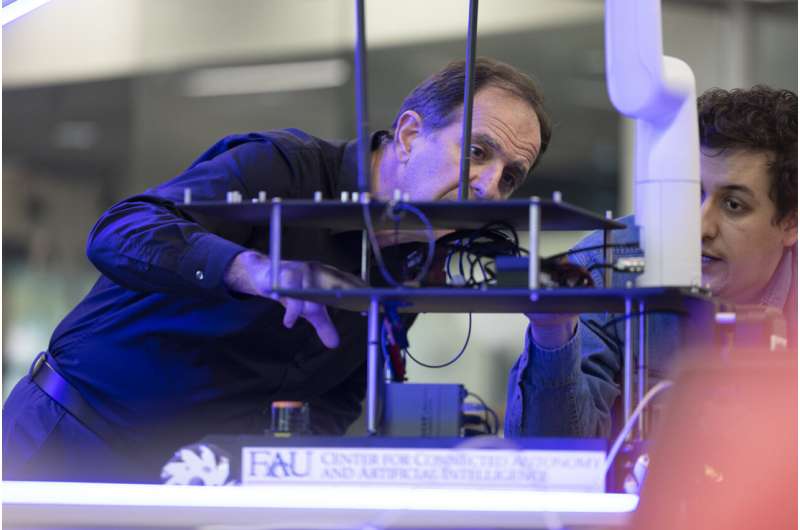This article has been reviewed according to Science X's editorial process and policies. Editors have highlighted the following attributes while ensuring the content's credibility:
fact-checked
trusted source
proofread
Researchers 'crack the code' for quelling electromagnetic interference

Florida Atlantic Center for Connected Autonomy and Artificial Intelligence (CA-AI.fau.edu) researchers have "cracked the code" on interference when machines need to talk with each other—and people.
Electromagnetic waves make wireless connectivity possible but create a lot of unwanted chatter. Referred to as "electromagnetic interference," this noisy byproduct of wireless communications poses formidable challenges in modern day dense Internet of Things and AI robotic environments. With the demand for lightning-fast data rates reaching unprecedented levels, the need to quell this interference is more pressing than ever.
Equipped with a breakthrough algorithmic solution, researchers from FAU Center for Connected Autonomy and AI, within the College of Engineering and Computer Science, and FAU Institute for Sensing and Embedded Network Systems Engineering (I-SENSE), have figured out a way to do that.
Their method, which is a first, dynamically fine-tunes multiple-input multiple-output (MIMO) links, a cornerstone of modern-day wireless systems such as Wi-Fi and cellular networks.
The researchers' approach, published in a special issue of the journal IEEE Journal on Selected Areas in Communications and featured as a research highlight in Nature Reviews, demonstrates how their algorithmic method sculpts wireless waveforms to navigate the crowded frequency band. By simultaneously optimizing transmission in space and time, this algorithm could pave the way for pristine communication channels.
In field demonstrations, the researchers dynamically optimized MIMO wireless waveform shapes over a given frequency band to manage and avoid interference in machine-to-machine communications and showed the effectiveness of this method in real-world scenarios where interference is a common problem.
"We have pioneered the conceptual and practical groundwork for machines outfitted with multiple antennas to autonomously determine the most effective waveform shapes in both time and space domains for communication within a designated frequency band, even among extremely challenging interference and disturbances," said Dimitris Pados, Ph.D., senior author, professor, director of the CA-AI and a fellow of I-SENSE in the Department of Electrical Engineering and Computer Science.
"By employing dynamic waveform machine learning in tandem across space and time, we believe that we have 'cracked the code' on mitigating electromagnetic interference."
Researchers first conducted extensive simulations to validate the efficacy of this method against a barrage of interference scenarios from near-field to far-field and in both light and dense interference scenarios. These simulations highlighted the ability of the optimized waveforms, particularly joint space-time optimization, to maintain "clean" communications in extreme mixed-interference environments.
"In the realm of autonomous systems and machine-to-machine communications, secure, reliable and 'clean' communications are paramount, underscoring the importance of this breakthrough research at Florida Atlantic," said Stella Batalama, Ph.D., dean, FAU College of Engineering and Computer Science.
"In the midst of chaos in modern communication, this innovative research offers a very promising avenue to address interference challenges in machine-to-machine communications where there are high volumes of devices and multiple networks."
More information: Sanaz Naderi et al, Self-Optimizing Near and Far-Field MIMO Transmit Waveforms, IEEE Journal on Selected Areas in Communications (2024). DOI: 10.1109/JSAC.2024.3389123


















